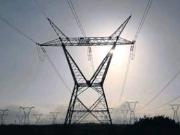
ESKOM issues a “tariffs and charges” booklet every year, explaining increases in the electricity price. Increases have to be approved by the National Energy Regulator of SA, apparently to stop the energy monopoly running rampant.
Back in 2007, the booklet depicted an energy-saving lightbulb against a sparkling blue background. Inside the booklet, the utility waxed lyrical about why it was introducing a price increase of 5.9% to 5.57% for municipalities.
“Eskom’s tariffs aim to be cost-reflective, not only to ensure economic efficiency and sustainability, but also to provide adequate revenue for reliable energy supply. All customers’ needs are considered with a view to be fair and equitable,” said Deon Conradie, who was listed as senior manager: electricity pricing.
Read that again. It tells you that in 2007 Eskom believed a modest increase would “provide adequate revenue for reliable energy supply”.
There were no warnings of what was to come, no intimations that the grid was under stress, no suggestions that accelerated capital spending would be needed to deal with growing demand. Nothing but soothing words from a grandfatherly state agency.
By the time the 2008 booklet was issued, all hell had broken loose. From late 2007, the country was hit by unexpected “rolling blackouts” as the grid began to collapse under the weight of demand. Eskom’s hollow assurances of the previous year revealed that it had failed utterly to understand, predict or anticipate the energy emergency.
The consequences of this mistake, which can be ascribed only to incompetence in Eskom management and the government, are being felt to this day.
Record world commodity prices should have meant a bonanza for South Africa’s mining sector. Instead, economic growth fell dramatically, and has never recovered.
Startled awake, the utility hit the consumer hard. Eskom’s 2008 booklet announced a 27.5% average increase in electricity prices. Its cover depicted a building bullet-proofing itself against load-shedding with solar panels, ceiling insulation, energy-efficient light bulbs and switches to control geyser and air-conditioning. In the distance, three lonely wind turbines can be made out.
The radical price increase was on the back of a new government levy of “2c/kWh”.
This would be followed by an even more dramatic tariff rise of 33.6% in the 2009 booklet. The increase sapped what little life remained in the economy, which would register its worst growth figure in decades at -1.5% for that year.
Somewhat bizarrely, the cover of the 2009 tariff booklet features a translucent globe, with Africa prominent, resting incongruously on the hand of what appears to be a white, middleaged gentleman.
For the first time, the tariff booklet includes a charter of “customer rights” such as the right “to accurate measurement of consumption”; “to error-free bills”; and “to be treated with respect”.
The 2010 edition of Tariffs and Charges covered all the bases. It depicted a soccer ball, by now compulsory branding as the soccer World Cup hove into view.
But some of the soccer ball’s panels had been replaced with depictions of Africa, a pylon and a wind turbine. Gone were the simple statements of average price increases in past booklets.
The price increase can barely be seen behind a curtain of technical language. Have a cup of coffee, take a deep breath and read this: “. . . the National Energy Regulator of SA approved an annual average price increase on the Eskom revenue of 24.8% . . . that will allow Eskom to recover revenue of R85.2-billion calculated from the annual revenues and sales volumes between the 2009/10 and 2010-11 financial years.”
In a table deeper in the document, the “local authority tariff” was revealed to be increasing by 28.9%.
Complexity does not describe the explanation of the new pricing regime.
An alphabetical listing of “charges that may be applicable to tariffs” goes all the way to “n”. That’s 19 charges.
Also making an appearance was something called an “inclining block tariff”. This means that “higher-consumption customers will see increasingly higher charges based on their electricity usage”. Translation: “The more you use our product, the harder you will be punished.”
Despite the radical increase, the economy staggered to a 3.1% rise in GDP for 2010, dragged along by World Cup tourism.
Eskom was in the throes of building and recommissioning massive coal-fired power stations to cope with demand, but its 2011 tariff booklet showed only renewable energy sources — wind turbines in a field of green vegetation at sunset and solar panels.
Inside, it revealed two local government tariff increases: 25.34% and 26.56%, depending on whether the government levy was used in the calculation.
With years of anaemic growth and the prospect of a “doubledip” recession firmly in view, Eskom finally ended its tariff increase frenzy in 2012. For that year, consumers would be expected to pay an average of only 16% more. It was three times the rate of inflation, but it seemed like Christmas after three years of carpet-bombing.
“The lower electricity price increases are the result of a combined effort by government and Eskom to lessen the impact of higher electricity tariffs on consumers and the economy in the short term without compromising Eskom’s ability to keep the lights on and ensure its long-term financial sustainability,” said Mr Conradie.
Did you spot the phrase? It read “without compromising Eskom’s ability to keep the lights on”.
The latest tariffs and charges booklet is nostalgic. On its cover are the various corporate logos of Eskom over its 90 years.
The electricity supply situation has normalised to such an extent that a laughably small average increase of just 8% is announced.
There were no warnings of what was to come, no intimations that the grid was under stress, no suggestions . . . Hang on. I’ve written those words before.
By Ray Hartley
Caption: CRIPPLED GIANTS: Electricity pylons outside Koeberg nuclear power station, near Melkbosstrand on the Western Cape coast
Ray Hartley graduate from Rhodes University
